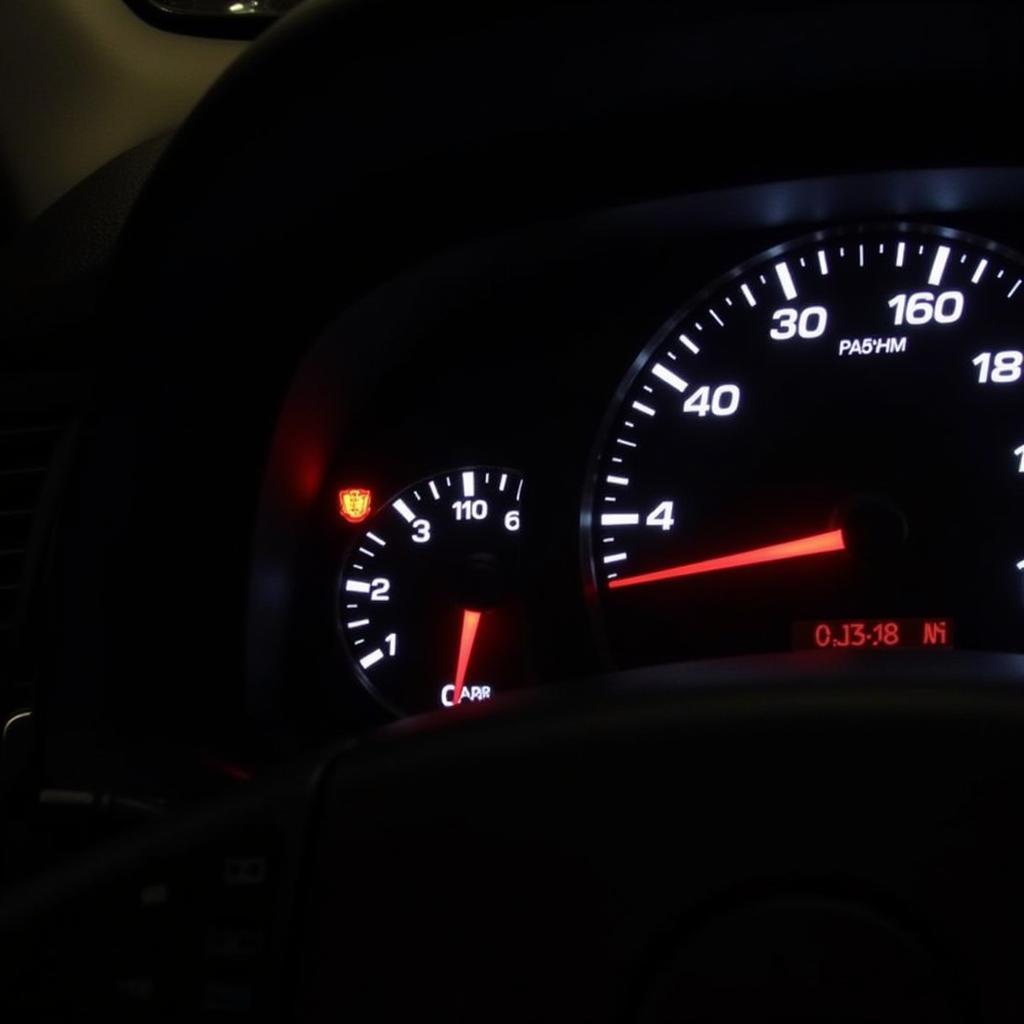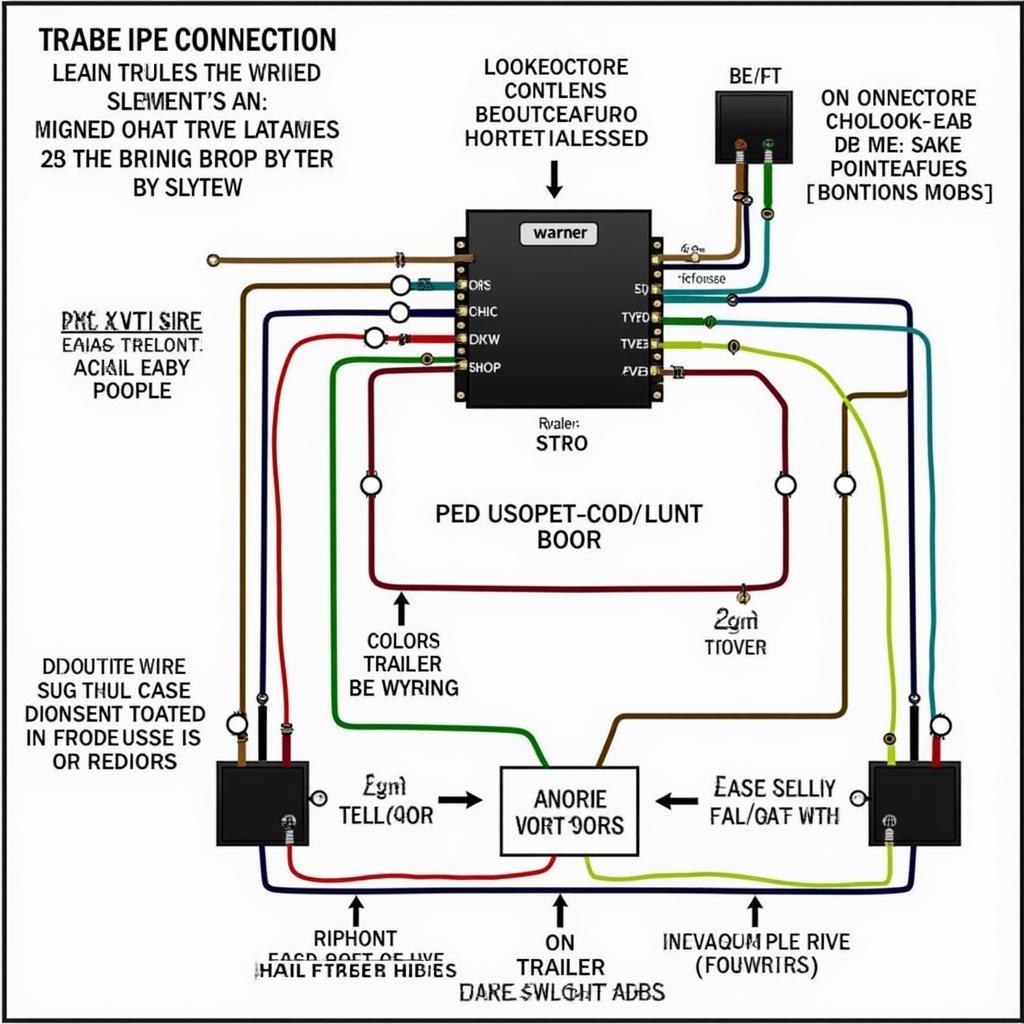The Volvo S80 is known for its safety features, including its advanced seat belt system. While these systems are generally reliable, you might encounter a persistent seat belt warning light on your dashboard. This can be frustrating, but understanding the common causes and solutions can help you address the issue effectively.
 Volvo S80 Dashboard Showing Seat Belt Warning Light
Volvo S80 Dashboard Showing Seat Belt Warning Light
Common Causes of a Volvo S80 Seat Belt Warning
There are several reasons why your Volvo S80 might display a seat belt warning, even if all passengers are buckled up:
- Faulty Seat Belt Buckle Sensor: The most common culprit is a malfunctioning sensor within the buckle assembly. This sensor detects if the seat belt is fastened and sends a signal to the car’s computer. If the sensor fails, it may send a false signal, triggering the warning light.
- Damaged Wiring Harness: The wiring harness connecting the seat belt buckle sensor to the car’s electrical system can become damaged over time due to wear and tear, corrosion, or accidental damage. This can interrupt the signal, leading to a continuous warning.
- Seat Belt Pretensioner Issue: The seat belt pretensioner is a safety device that tightens the seat belt in the event of a collision. If the pretensioner is faulty or its wiring is damaged, it can also trigger the warning light.
- Software Glitch: Like any computer-controlled system, the Volvo S80’s seat belt warning system can experience software glitches. These can cause the system to malfunction and display false warnings.
Troubleshooting the Seat Belt Warning Light
Before heading to a mechanic, you can try some basic troubleshooting steps:
- Check for Obvious Issues: Ensure all passengers are properly buckled and that there are no objects obstructing the seat belt buckles. Sometimes, a simple oversight can be the culprit.
- Inspect the Wiring: Visually examine the wiring harness beneath the seats and around the seat belt buckles for any signs of damage, such as cuts, fraying, or loose connections.
- Check the Fuse: Locate the fuse box and identify the fuse associated with the seat belt system. Inspect the fuse for any signs of a blown fuse, and replace it if necessary. Consult your owner’s manual for the fuse box location and diagram.
- Reset the System: Disconnecting the battery for a few minutes can sometimes reset the car’s computer system and clear temporary glitches. However, be aware that this will also reset your radio presets and other personalized settings.
When to Seek Professional Help
If the troubleshooting steps don’t resolve the issue, it’s essential to seek professional help. Modern vehicles like the Volvo S80 have complex electrical systems that require specialized knowledge and tools to diagnose and repair.
“Attempting to fix complex electrical issues without proper training can be dangerous and potentially cause further damage to your car’s system,” advises Mark Jenkins, a certified Volvo technician with over 15 years of experience.
Remote Diagnostics and Software Solutions
In some cases, the problem might lie within the car’s software. Advancements in automotive technology have made remote diagnostics and software updates a viable solution for certain issues.
“We can often diagnose and resolve software-related problems remotely, saving car owners time and inconvenience,” says Sarah Thompson, a software engineer specializing in automotive systems.
By utilizing specialized software, technicians can access the car’s computer system wirelessly, diagnose the problem, and even install software updates or patches to rectify the issue.
Conclusion
A persistent seat belt warning light in your Volvo S80 can indicate various issues ranging from a simple sensor malfunction to a more complex software glitch. While basic troubleshooting steps can sometimes address the problem, it’s crucial to seek professional assistance for accurate diagnosis and repair. With remote diagnostics and software solutions becoming increasingly prevalent, addressing these issues has become more convenient than ever before.


